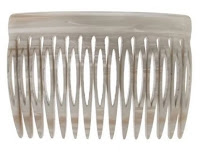*Google translated from Persian
Workshop paper marbling in the library and the National Museum held property
Workshop paper marbling, with the holding of the 8th Festival of the eighth month in the dignity of the National Library and Museum in 1395 property.
The Economist-Iran Workshop paper marbling in the library and the National Museum held property
Astan Quds Razavi endowed, workshop paper, Mehdi sohrabi, teaching with cloud and cloud maker, for free on Saturday 16 August 1395 solar from 13 up to 16 hours.
Cloud storage is one of the ancient arts of Persia in the book of the fan layout. Cloudy with artists create eye-catching color combinations and random patterns and beautiful, compelling and an imagination on paper quotation. «Cloudy» in the term paper, with different colors on it درآمیختن, نقوشی SCR is similar to cloud or water waves, emerged. Of such paper to an exquisite accompaniment to the margins of the book linear, mrghaat, text and line drawings, cover parts, astrbderghh books, ghlmdan and oily box field. This paper today, but more for a piece of blogging.

Malek National Library and Museum ", with cloudy course (abrubad paper), an introduction to more traditional arts areas students judging and layout books with one of the most attractive part of this technique provides. Mehdi sohrabi, cloudy and ghtaa, kermanshahi Madras this workshop. He was previously a few workshops and training courses on construction of the National Library and the Museum of paper marbling has held property.
He tells about this: "making and taking advantage of the cloud paper, common since the
Safavid in Iran. The artists of this period were his popular roles with various colors and shapes and drawing on paper پرمایه roles. This technique however in the
Qajar period in Iran, Iran to India ronhad oblivion but went on there. Since the Japanese way also. Japanese artists also performing guest on the papers get, it put an upgrade. Making travel more cloud around his long, West of the Ottoman and then went to Iran and Europe continued to make changes where it was returned to Iran.

According to him, nowadays, Japanese artists and leave, have an abundance of interest to build a paper marbling and many creations in this field have shown themselves.
This cloud maker adds: "now we have sought after holding several courses and workshops now open to practical manner in the library and the National Museum of Iran in the field of property, techniques of making abrubad to both athletes and learn aficionados».
According to there are exquisite versions of linear sohrabi, paper abrubad at the Institute of the National Library and Museum property, such that the provision of appropriate training for and provides the students can take part in an old art associated with this attractive, practical way, cloud storage techniques to make فرابگیرند.
Those interested to participate in the workshop paper marbling to register can on Tuesday and Wednesday, 12 and 13 August 1395 solar from 10 to 16 hours contact telephone number 66700878.
The 8th Festival of the eighth Moon, the coming decade with dignity at the same time from 14 to 24 August 1395 with a variety of programs in the field of solar art and culture of the Islamic Iranian national library and Museum "to the property address sq., Tehran, Imam Khomeini, the national garden, the street front of the United Nations».
This workshop with the capacity of 40 people were being held, but the presence of the person in it only with a previous registration will be possible. The priority of the presence at the workshop with مندانی interest will be due to capacity limitations, as early as possible and call register.
























